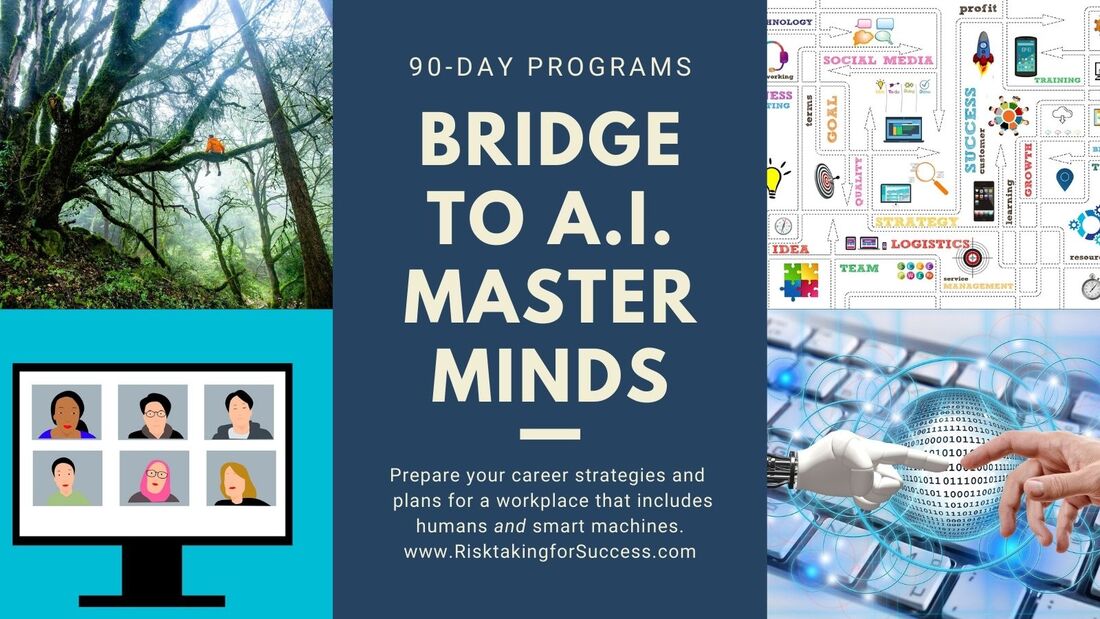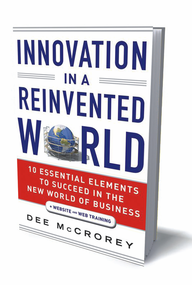|
Don’t kid yourself. The Covid-19 pandemic has accelerated executive-level plans for funding automation, and although having grown stale in the last year, these projects are now looking more attractive given the current situation.
This means that the timetable for scaling workforce preparation—acquiring foundational knowledge, reskilling and upskilling—is no longer a 2030 vision, or what many thought might be closer to 2040, but more along the lines of 2025. In just a few short years the disruptive elements of advanced technological change will be felt globally. Here are five reasons to embrace the next technological wave of edge technologies—automation, robotics, and artificial intelligence—now, even if you think you won’t be impacted by automation developments before 2025. Reason #1: Incremental Strategies Surpass Sluggish Plans Evolution works well in most situations, including innovation. Not everything needs to be revolutionary for it to be valuable and to work well. It’s about moving yourself forward, not aiming for perfection. Bottom line, sluggish plans may be worse than no plans at all because they lead you into a false sense of security. You don’t want complacency to blindside you by pretending that the future won’t disrupt how you work and live. Reason #2: Motivation Is Easier When It’s Future-Focused Whether it’s self-motivation, or motivating someone else, the best way to get out of your head is to visualize a future that includes you in the picture. Raise your energy level as you visualize a future that gets you excited—changing careers, applying for a new opportunity, new training, an out of state move—it won’t take long to shift your brain into an exciting call to action. Take the first step that feels like part of your aha moment—you’ll gain momentum from this point forward. Reason #3: Futurist Dots Can Be Fun to Connect Many of us enjoyed playing with puzzles as children (and many of you still do!), finding the pieces that fit the edges and the center, trying them out, and the excitement when you completed the puzzle. Would you believe if I told you that connecting dots associated with the future can be just as much fun? You begin with research—qualitative (first-hand observations, interviews, surveys, etc.) and quantitative (historical and current data). These are your puzzle pieces. You’re going to pull together all your research and begin “bucketing” the information. You’re looking for pieces that will fit the corners and the middle and the sides. This is how researchers and analysts discover trends and patterns and make leaps into the future. It can be fun pulling together research where you find the most important story in the data! Reason #4: Life Is More Interesting When You’re a Step Ahead Keeping a step ahead of yourself makes life interesting. Staying ahead of the curve keeps you competitive. Edge technologies are advancing—some industries faster than others—therefore, remaining in front of your Personal Inflection Curve (P.I.C.) is both interesting and smart, which is why we cover this in-depth in our online course 30 Days to a Recession-Proof Reinvention. Reason #5: Do-ers and Thinkers Can Both Play in the Sandbox Imagine for a moment that you’re the process-oriented, hands-on person and your new work partner is the analytical, theoretical work partner. How will you collaborate with smart machines in future, a future closer than you think. You might be asked to identify and document aspects of your current job that you would be delighted to offload to your robotic partner. Are there tasks associated with your job that you would like to automate? What would this free you up to do? Where would you want to add new value? Where would you tap your creativity? Now is the time to have some fun capturing these ideas in your journal. Go on—give one (or all five!) a try and let us know how you get on.
0 Comments
 I published a post on one of my other blogs The Practical Professional about Gauging Your Risktaking Competency for an Ever-Changing Workplace that covered three levels of risktaking needed for today’s complex, workplace environments. What prompted me to write the post was an uptick in the number of mentoring requests that I’ve received from female professionals over the last six months looking to reinvent themselves on a more solid risktaking foundation. Because I offer only three slots on a three month rotational basis on a range of topics that I consider myself qualified to mentor, when I received more requests on a single focus area, in this case, personal / professional risktaking, well, I did sit up and take notice. What might be triggering this increase in mentoring requests for personal and professional risktaking? I’ll get to this a bit later in the post... The Evolving Female Risktaker I always ask a potential mentee about whether they had attempted to find a mentor inside their company, if applicable, before reaching outside their organization. There are those who sought me out because of my specialty area of risktaking. Others were referred to me by former mentees or an article, blog post, or my book on innovation. I’m still (unpleasantly) surprised when women tell me they were discouraged or turned down by a female leader because they didn’t possess “professional currency” for the mentoring relationship to work. When did it become part of the mentoring landscape that you needed to bring something of value to the table before approaching a mentor. I thought this was what mentoring is about? Risktaking Topics + Mentoring Flow Mentoring professionals in helping them reach their personal and professional risktaking goals really depends on where they are along the spectrum. In other words, are they just beginning their risktaking hero’s journey or are they more experienced or are they seeking mastery, e.g., leading high-impact / high-risk initiatives, programs, or projects.
Why All the Fear? People may be sensing an economic shift on the global front that could easily make its way to U.S. shores next year. Even if America avoids a full-blown recession, new positions or new opportunities for advancement could begin drying up or, at the least, slowing down from the past few years. Given the number of mentoring requests that I began receiving earlier in the year from (primarily) women who specifically asked about risktaking, I decided to add a question to my exploratory mentoring checklist asking them “Why this topic and why now?” My instincts were correct—at least regarding the changing economic conditions—but I was a bit surprised that these women were now being coaxed by their managers to step up and join high-impact teams or even consider leading one. One woman shared with me during our exploratory call that her manager had asked that she step out of her comfort zone and consider leading a small team by:
This challenge became the focus of our three months together. I was delighted to later find out that her manager had given her the green light to move forward. Some months later, I heard back from my former mentee that she had been tapped to lead this small, but gutsy team in addressing an internal need. Adding to this initial success, her manager had approved an internal coach to support her efforts! The Evolving Mentoring Relationship I’m pleased to say that my former mentees and I have remained in touch over the years (even decades!), sometimes re-mentoring them when their situations changed, but mostly evolving the relationship over time to a more egalitarian one—from mentor-mentee to professional colleague.
Let’s face it. Long before robots and automation came into the picture we (at least Americans) have struggled with the acceptance of aging as part of a natural cycle with its own life stages.
So, it’s a bit surprising to watch as pent up anger fueled by fear—loss of jobs, loss of control—is directed at advanced technologies and the next generation of smart machines, especially when strong emotional responses haven’t been the norm when companies regularly displace older employees and replace them with younger workers who often possess knowledge of the newest technologies. But due to longer life spans and disruptive economic conditions during the last three decades, what was once a natural transition cycle of outgoing and incoming labor has now ushered in a demographic reality in the workplace—career professionals expect to remain working beyond the age of retirement. Let’s take a look at the data. More than half of older workers are pushed out of longtime jobs before they choose to retire, with many workers over 50 experiencing multiple job losses, according to data from ProPublica and the Urban Institute. Americans are facing an increasingly difficult working life in their later years, as more workers are asked to finance their own retirements, and age discrimination laws are blunted by U.S. courts in favor of employers, says ProPublica. Why do companies look to push out their 50+ cohort just when they’re growing in wisdom, solidifying their business savvy, and increasing their skills, intrinsic knowledge and experience? Assessing Elder Talent Instead of pushing people out primarily due to age, business leaders might consider performing an end-to-end assessment of their “emerging elder status” base and align it with the company’s vision and strategies over the next 2-5 years. How do you know what you really have unless you’ve assessed your talent before you let them go? Think broadly when assessing your workforce. You’re looking for skills that they use on-the-job today as well as under-used skills or under-valued capabilities that are primed to be tapped. Draw out potential capabilities that could be up-leveled with retraining and skills that could be enhanced in order to address short term challenges and longer term strategic goals. Don’t be afraid to ask exploratory questions that allow your employees to share deeper stories that help you to glean areas of past innovations, problem solving, and people solving skills. This process would be time consuming if performed by a fleet of HR professionals attempting to assess a large base of employees weeks before an intended downsizing effort. But by proactively leveraging resources within the company—for example, engaging middle managers and training professionals—in order to collect employee stories, along with the help of an AI assistant, data could be compiled and analyzed far more efficiently. Four Areas to Tap the Innovative Power of Inspired Elders Jumpstart new initiatives What to look for:
Kickstart stalled projects What to look
Trailblaze process innovations What to look for:
Mentor high-impact project leaders What to look for:
Additional Resources Chip Conley’s talk at Google, where he discusses many of the things covered in his book Wisdom @ Work: The Making of a Modern Elder https://youtu.be/XPvjm7B5iew Takeaway quote: “It's likely that for the future of work to be managed comfortably, we'll need to have a healthier perspective on older people in both the workplace and society more generally.” Did you catch the article based on the results of a survey by KPMG LLP titled Will Women Take Big Risks?
Although disconcerted by aspects of the Risk, Resilience, Reward survey where 2,000 women were asked about their approach and behavior when it comes to taking risks at work, I was pleased that IndustryWeek published it on their website given that manufacturing companies continue to struggle with attracting women to the field. Key callouts from the survey:
Below are five reasons why business leaders shouldn't ignore the cultivation of personal risktaking as a critical factor as they upscale their policies in support of more women taking informed, responsible risk in the workplace. 1. Risktaking lies between creativity and innovation Survey data point: less than half [of the surveyed women] (43%) were open to taking big risks associated with career advancement Risktaking provides the path to innovation. It lies smack dab in the middle between creativity (our brain power) and innovation (the best of our disruptive selves). Risktaking represents the actions we take in pursuing our path to innovation. There's no way getting around it. If we're not disciplined enough to focus on what we envision and not courageous enough to pursue that vision, we limit our ability for personal and professional growth. Change Tip: As part of the company's professional development policies, business leaders could upgrade the performance reward structure for high-impact, strategic opportunities, ensuring that any change campaign and communication plan includes live workshops and virtual webinars that target female populations. And don't forget to update existing onboarding and training materials for new hires as well as current employees. 2. Risktaking builds trust Survey data point: a larger number [of women] (69%) were open to taking small risks to further their careers All trust begins with self-trust. When people trust their ability to raise the bar on their terms, they develop and strengthen their self-confidence. Even if the outcome of an endeavor doesn't meet expectations, risktaking builds resilience and perseverance while preparing professionals for pivots and possible setbacks. In the evolving workplaces of the future when colleagues are just as likely to be humans as much as smart robots, the ability to trust and collaborate in new ways will differentiate career professionals in business. Change Tip: Support female professionals as they strengthen their risktaking muscles and trust quotient. Meet them where they are today by assessing where they are along the change curve (see below model from the Acuity Institute). The goal is to move them along the path from incremental risk to higher-impact, strategic opportunities. The Future Is Upon Us
1/9/2019
0 Comments
I'm excited to begin collaborating with an Articulate Storyline instructional designer who will take my creative vision and the practical aspects of leading and implementing advanced technologies and translate these into an interactive online course.
I'm reluctant to say that this course prepares you for the future, mainly because that would give you a false sense of security about how much time you have to begin the change process. That's because the future is upon us. We're not talking 20 years from now, but more like 3-5 years when we can expect some real business traction. Of course, this depends on how the economy goes in 2019. We could see automation and smart robotics deployment gather speed or slow way down, even by early AI adopters. A key driver? Labor force vs. automation costs. Take a look at the disruption occurring in the restaurant industry where robots have replaced minimum wage workers and startups include automation as part of their business models. It is imperative that leaders and professionals include automation and smart robotics in their business strategies and career plans. You want to be well-positioned to take advantage of opportunities that could pop up "out of the blue". Preparation is key. I often get questions from people who want to know the role that change leaders play as part of a project team or when they're involved in the launch of a new product. Although these are certainly key areas supported by change managers, their role can, and is often, more than that. As an organizational change leader I pride myself on being equal parts optimist, pragmatist and futurist, leveraging the elements associated with these areas into whatever I'm tackling, whether it's facilitating a strategy planning session or bridging executives' visions with the practicality of bringing their visions to fruition. In other words, change managers wear many hats! We focus on the obvious aspects of what is in play today, but we also look for the undercurrents of future change. This infographic helps you map out what change leaders can do for you.
There's a link at the bottom of the page to download a copy of this report.
|
Dee McCroreyPassionate about technology, the future of work, and the people side of change. Archives
November 2020
|
||||||||||||||
- 901-4424-099
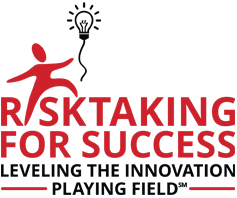
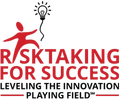

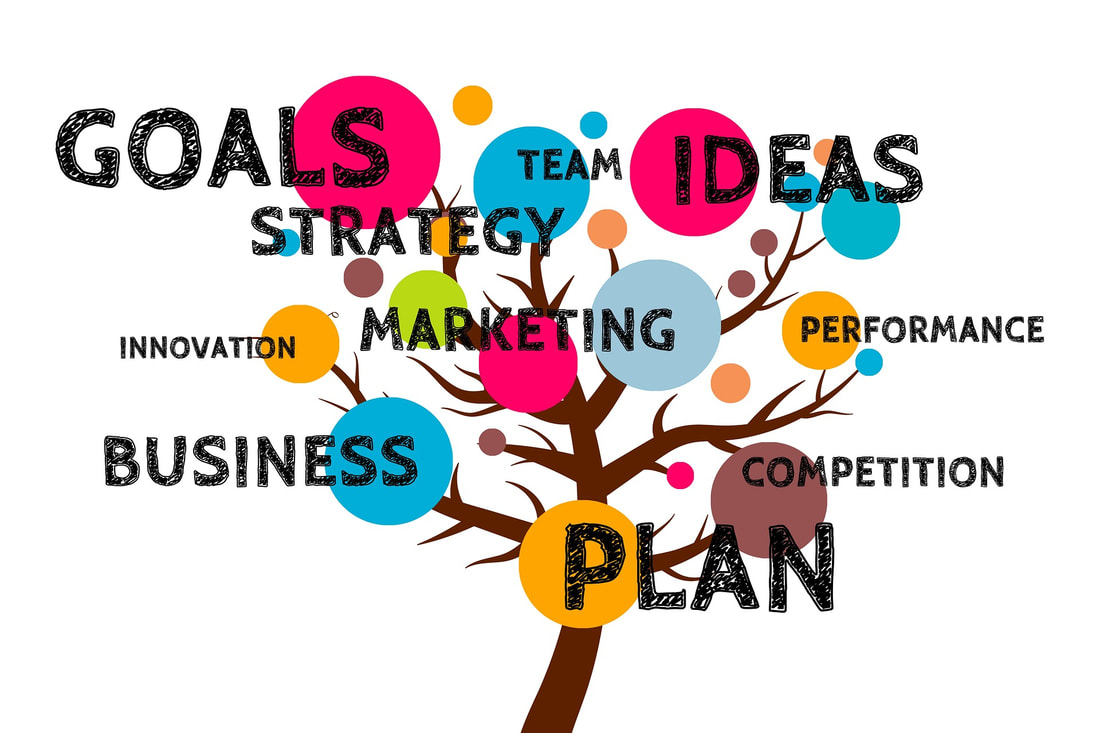


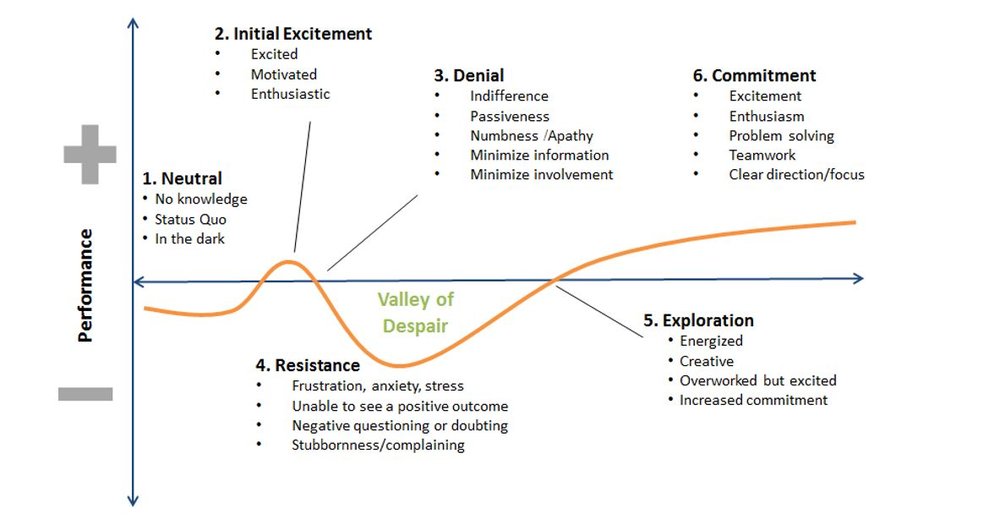


 RSS Feed
RSS Feed
